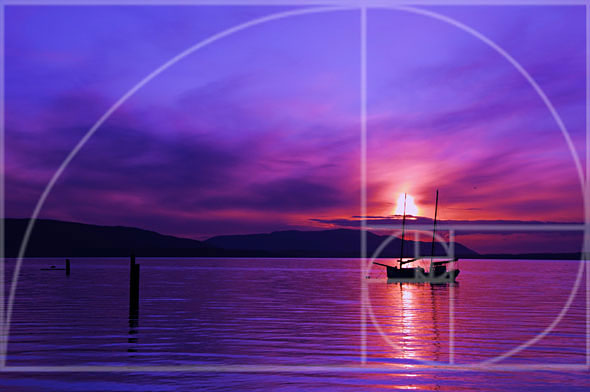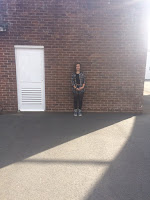Match of Action
Monday, 31 October 2016
Tuesday, 11 October 2016
Composition
Composition in media contains:Golden rectangle:
The Golden Ratio is a term used to describe aesthetically pleasing proportioning within a piece of work or an image. The centre of the spiral fits the most important, eye catching part of the image.
The rule of odds:
The rule of odds states that having an odd number of objects in an image will be more interesting and therefore pleasing to the eye and to look at.
 In case there is an even number of objects, your brain would have an easier time organizing and looking at the objects.
In case there is an even number of objects, your brain would have an easier time organizing and looking at the objects.The objects in pairs are therefore bringing in symmetry and dullness.
If you have one main object, accompany it with two supporting objects, not one. This way, one of them will be a middle one.
 Leading lines:
Leading lines: The use of lines can be used to direct the viewers attention to the subject of your photograph. These lines can be straight, diagonal, wavy, or any other creative variation.
They may also lead away from the photography subject.
 Strong diagonal:
Strong diagonal: Out of all the lines used in photography, diagonals are the most dynamic.
You can use them to create a strong impression of movement or you can use them to create a tremendous sense of depth.
All images are created with lines, some vertical, horizontal and others converging but knowing how to place them affects the mood and composition of the final image.
 Point of view:
Point of view: Point of view in photography means the position from which the camera sees the scene. Are you looking down on the subject? Are you looking up at the subject? How close are you to the subject? Is there anything between you and the subject? Every decision you make about point of view will change how your viewer sees the photo.
Framing:
Framing is when the background an image is broken up by a frame within the image. This could be and image of scenery taken from inside through a window, broken up by a window frame.
Filling the frame:Filling the frame in is when the image you have taken takes up the whole frame. Photographers get in very close to whatever they are taking. They do this to make a significant portion of the photograph the final photograph.

Active space:
Active space is when the photographer gives space for the subject to move into a space. Some people call the space in front of the subject Active space and some call the space behind the subject dead space.
Sunday, 9 October 2016
Rule of Thirds
The rule of thirds is a guideline which applies to the process of composing visual images such as designs, films, paintings, and photographs.
The guideline suggests that an image should be divided into nine equal parts by two equally spaced horizontal lines and two equally spaced vertical lines, and that the important elements should be placed along these lines or where they cross.
Finders of the technique claim that putting the subject in line with these points creates more tension, energy and interest in the important parts of the photo.
Learning about The Rule of Thirds will help the composition of my shots as well as filming my shots.
Tuesday, 4 October 2016
Extreme Close-Up - This shot is very close up to the face. It shows the characters facial expressions. This shot is very intense and personal.
Close-Up - This shot is of the face. It allows us to also see facial expressions. It gives us the identity of the character. It is used in a lot of romantic films.
Medium Close-Up - This shot is of the face and shoulders. It allows us to see what they are wearing and the background. This shot establishes the character.
Mid-Shot - The mid shot is the top half of the character. It lets us see what they are wearing and the outline of them. It also lets us see if they are holding props and if so what the props are.
Medium long shot - A Medium Long Shot is of hole body. It shows you more of what the character is wearing and more of the background. It also shows their posture.
Long Shot or Wide Shot - This shot is far away from the character. It lets the the audience see all of the character from head to toe. This shot also lets you see the surroundings that the character is in.

High Angle-Shot - This shot is a very intimidating and makes the character look vulnerable. It is a birds eye shot looking down on the character. The shot makes the character look small.
 Low Angle-Shot - This shot makes the character look bigger. It makes the character look powerful. It is taken from below the character.
Low Angle-Shot - This shot makes the character look bigger. It makes the character look powerful. It is taken from below the character. 2-Shot - This is contains to characters. It is a shot usually to introduce another character and the relationship going on between them.
2-Shot - This is contains to characters. It is a shot usually to introduce another character and the relationship going on between them.Over the shoulder-shot - This shot is usually used in conversation between two or three people. It allows you to see both characters whilst one is speaking. The character you can properly see is usually the one speaking at that point.
The research I have carried out on camera angles will help me when I am constructing my practical work.
I will use some of these camera angles in my work when constructing storyboards.
Subscribe to:
Posts (Atom)










